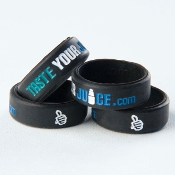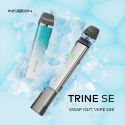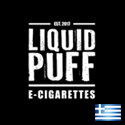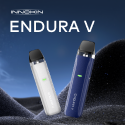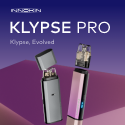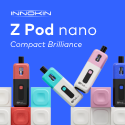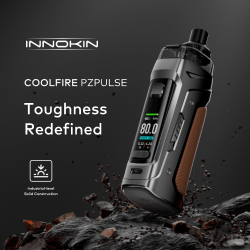Last Updated: 3/28/20
See something that’s missing? Just let me know!
18650 – The most commonly used user replaceable battery in the vaping industry. They come in different amp ratings and capacities. The ’18’ indicates the battery’s diameter of 18mm, the ’65’ indicates the battery’s length of 65mm. The final ‘0’ indicates that that battery is cylindrical. Other commonly used batteries are the 26650, 18500, 18350, 20700, and 21700.
510 – The most common screw in connection between an atomizer and a vaping device.
AEMSA– American E-liquid Manufacturing Standards Association.
AFC– Airflow Control. This allows you to adjust the tightness of the draw on tanks and devices.
Analog – What electronic cigarette users (vapers) call a traditional (or real) tobacco cigarette.
APV– Advanced Personal Vaporizer.
Atomizer (Atty) – The atomizer is the heating unit of the electronic cigarette. Usually metal wire wrapped around a core. It gets hot when electricity from the power source is applied and “vaporizes” the e-liquid. This is what generates the vapor.
Automatic Devices or Batteries – Automatic batteries or devices will activate the heating element automatically when a puff is taken. You do not have to use a button to activate the heating element.
AVA – American Vaping Association. The AVA is a nonprofit advocacy group that champions the use of vapor products and electronic cigarettes to help smokers quit.
AWG – American Wire Gauge. The number gives the thickness of the wire. As the AWG number goes up, the wire will be thinner with more resistance. As the AWG number goes down, the wire will be thicker with less resistance.
Battery (Batt) – The battery is the power source for an electronic cigarette. It provides power to the heating element which vaporized the e-liquid. Some batteries are integrated into the device and are not removable or replaceable. These devices will come with a charge cable and require a USB power source to charge. Other batteries such as an 18650 can be removed from a device. These batteries can be charged in device (if supported) or in an external charger.
BDC – Bottom dual coil.
Bridge – A U or V shaped covering over the heating coil of some atomizers. It is usually metal covered by an absorbent material designed to wick e-liquid from a cartridge filler to the heating element.
BVC – Bottom vertical coil.
Cartomizer (Carto) – The cartomizer combines a heating element and juice delivery system into a single unit.
Cartridge (Cart) – A cartridge holds the e-liquid, sits on top of the atomizer, and directs the liquid into it. The cartridge should be considered “old technology” at this point.
CASAA – The Consumer Advocates for Smoke-free Alternatives Association.
CE-2 – A CE-2 type device generally has the heating element towards the top of the device and wicks that go down into the juice. These wicks are designed to direct the juice from the bottom of the device to the top where the heating element is.
Cig-A-Like – An electronic cigarette that simulates the look, feel, and size of a real cigarette.
Clapton Coil – A clapton coil is just one of the many exotic coil types out there and perhaps the most popular. It is typically a thinner gauge wire tightly wrapped around a thicker gauge core. Exotic coils, such as the clapton are believed to have increased flavor due to the increased surface area of the coil.
Clearomizer – A tank system that uses an atomizer head or coil that is typically replaceable by the user. Although they are not designed to be rebuildable, some of the heads can be rebuilt. Clearomizers come in many versions including top coil (like the Vivi Nova) and bottom (like the ProTank) and heads with single and dual coils. Most modern day Clearomizers also feature adjustable air flow control.
Closed System – An electronic cigarette system that comes pre-filled and cannot be refilled by the user.
Cloud – Term for the output vapor from an electronic cigarette.
Cloud Chasers – Vapers who strive to achieve as much vapor output as possible.
Coil – The thing that gets hot! Generally a piece of nichrome or kanthal that has been wrapped around some kind of wick. Current flows through the coil, the coil gets hot, and vaporizes your e-liquid. You then vape happily.
Connection Type – Many different connection types are used to connect the atty/carto to the device or battery. The most common are 510, 901, 808, 801. The 510 has won the “format war” and is what we see mostly used today.
Cotton – Cotton, or more specifically, organic Japanese cotton has replaced silica as the most commonly used wicking material in pre-built coils and rebuildable atomizers.
Cutoff – How long an electronic cigarette will fire before it shuts itself down.
Diacetyl – A flavoring agent used in e-liquids to produce a rich buttery flavor. It has been determined that this agent is responsible to “popcorn lung” and should be avoided.
Dimitris AKA The Vapin Greek – A former electronic cigarette review who is very difficult to understand due to his thick Greek accent. His favorite color is pink. He has the honor of being Phil Busardo’s friend.
Direct Lung (DL/DTL/D2l) – A style of vaping. This is the act of taking the vapor directly into the lungs using the lungs. It may also be known as a “lung hit”.
Disposable – A single use electronic cigarette. Typically an all in one device containing the battery, coil, and liquid, the entire device is thrown out after the battery dies or the liquid runs out, whichever comes first.
DIY – Do It Yourself. In vaping this generally describes making your own e-liquid.
DNA – A series of boards by Evolv used to control electronic cigarettes.
Drip Shield – With dripping comes over dripping. With over dripping comes leaking! The drip shield was originally designed for the 901 atomizer to “catch” over dripping inside the shield and prevent e-liquid from leaking all over your device. It also works with a 510 atty, but you’ll need to use a 510 to 510 extension to raise the air path for proper airflow.
Drip Tip – A drip tip is a mouth piece originally created to be used on an atomizer for “dripping”. It has an enlarged opening allowing you to drip e-liquid directly into it. Drip tips come in many different styles, colors, sizes, shapes, and materials. You will, at times, hear drip tips being called mouth pieces and vice versa.
Dripping – Dripping is the act of manually getting e-liquid to the heating element by “dripping” it directly onto the heating element. This removes the e-liquid delivery system from a typical electronic cigarette system. People generally consider dripping to provide the best possible vapor, throat and flavor.
Dry Burn – The act of firing a rebuildable coil with no wick or liquid in order to de-gunk or clean the coil. It is not recommended to fully glow the coil.
Dry, Scratchy Hits – This can occur when not enough juice is supplied to an atty or carto. This will result in poor flavor and vapor.
Dual Coil – Atomizers, coil heads, cartomizers, or rebuildables that utilize two coils instead of one.
Electronic Cigarette (E-Cigarette, E-Cig, Personal Vaporizer, PV) – A device used to vaporize e-liquid and creates the sensation of smoking a traditional cigarette. A typical electric cigarette is a system made up of three important parts. A power source, a heating element, and an e-liquid delivery system. The power source provides power to the heating element which heats up and vaporizes the e-liquid. The e-liquid deliver system holds and directs the e-liquid to the heating element. http://en.wikipedia.org/wiki/Electronic_cigarette
E-Liquid (Juice) – E-Liquid is vaporized by the heating element and this vapor is inhaled to create the sensation of smoking. E-Liquid generally contains 3 components. A base of either Propylene Glycol or Vegetable Glycerine (or some combination or “blend” of the two), nicotine, and flavorings. Nicotine is optional.
ENDS – Electronic Nicotine Delivery System.
EVALI – E-cigarette or Vaping product use-Associated Lung Injury. The name given by the CDC to the vaping lung disease that was caused by vitamin E acetate cutting agent used in illicit THC cartridges. This disease has nothing to do with nicotine vaping, the type of vaping discussed on this website.
Filler Material – The material found in cartridges and some cartomizers. This material is designed to soak in the e-liquid and direct it to the heating element.
Flooding – This can occur when too much juice is supplied to an atty or carto. This will result in poor vapor and “gurgling”.
Freebase Nicotine – Standard nicotine used in e-liquid. The other type is salt. You will get a stronger throat hit from a freebase nicotine liquid over a salt nicotine liquid.
Gurgling – Usually occurs when too much e-liquid is supplied to a given device resulting in flooding. This can also be caused by condensation built up in the air passage.
Heating Coil – The thing that gets hot! Generally a piece of nichrome or kanthal that has been wrapped around some kind of wick. Current flows through the coil, the coil gets hot, and vaporizes your e-liquid. You then vape happily.
Hot Spot – A coil that is heating unevenly. This could cause part of the coil to glow and burn a wick prematurely. Hot spots in rebuildables can be fixed by first identifying the hot spot by dry burning, and then “brushing” the coil lightly with something like a micro screwdriver. By repeating these steps, you will eventually work the hot spot out. Creating simple spaced coils will also eliminate the possibility of hot spots.
ICR – Lithium Ion Cobalt Rechargeable Battery
IMR – Lithium Ion Manganese Rechargeable Battery
Juice (E-Liquid) – E-Liquid is vaporized by the heating element and this vapor is inhaled to create the sensation of smoking. E-Liquid generally contains 3 components. A base of either Propylene Glycol or Vegetable Glycerine (or some combination or “blend” of the two), nicotine, and flavorings. Nicotine is optional.
Kanthal – One of the main types of resistance wire used for the heating coil in an atomizer or cartomizer. The others are nichrome, nickel, stainless steel, and titanium.
Li-Ion – Lithium Ion rechargeable battery
Li-Po – Lithium Polymer rechargeable battery
mAh – Milliamp Hours – Indicates the capacity of the battery. Generally a higher rating means a higher capacity.
Manual Devices or Batteries – Manual batteries or devices will activate the heating element only when a button is pushed. Most electronic cigarettes and mods use some type of button.
Mechanical (Mech) Device/Mod – A mechanical device or mod is just that, purely mechanical. There is no circuitry, protection, or other electronics in use. The button will close the circuit sending power from the battery directly to the atty/carto connection. It is extremely important to understand ohm’s law and battery capabilities when using a mechanical.
MG – Milligram strength per milliliter Used to describe the nicotine strength of an e-liquid. 12mg = 12mg of nicotine per milliliter or 1.2%.
Mod – Originally , a mod was a device created by an e-cig enthusiasts looking for a better device than those mass produced. They wanted superior performance in battery life and vapor production as well as build quality. The term “mod” is used loosely these days and sometimes not correctly. Mod can also be used to describe a modification made to an electronic cigarette or device to improve it’s performance.
Mouth To Lung (MTL/M2L) – A style of vaping. The 2 step process of taking the vapor into your mouth using your mouth muscles, following by taking the vapor into your lungs along with additional air from the mouth or nose using your lungs. This is how 99% of the world smokes a cigarette.
Multi-Voltage (MV) Device – A device that has pre-determined voltage settings. Most of these have at least three settings. For example, a low setting could be 3.7V, a medium setting could be 4.5V, a high setting could be 6V. You cannot adjust outside of these settings. This is not a commonly used term in the vaping community, but it needs to be. Examples: The SVR, The EVO, The Ovale F-50.
Nichrome – One of the main types of resistance wire used for the heating coil in an atomizer or cartomizer. The others are kanthal, nickel, stainless steel, and titatium.
NiMH – Nickel Metal Hydride rechargeable battery.
No-Resistance Wire– The heating coils in some RBA installs require no-resistance wire leads to be attached. They allow for current to get to the heating coil through them, but the portion that is no-resistance will not get hot. The two types that are generally used are silver and nickel.
NRT– Nicotine Replacement Therapy
Open System – An electronic cigarette system that can be filled with e-liquid by the user.
Passthrough – A true passthrough allows you to vape off an external power source other than your electronic cigarette’s battery. A passthrough is different from “vape while charging” in which case you are still vaping off of your battery and not the external power source as your battery charges.
Personal Charging Case (PCC) – A device that you first charge and then use to charge your electronic cigarette batteries while out on the go and away from an outlet. These are generally used and helpful for smaller electronic cigarette models with less vape time between charges on the batteries.
Personal Vaporizer (PV) – Another name for an electronic cigarette and generally preferred by the vaping community.
Pods Systems – Pod systems are a more recent trend in electronic cigarettes. Smaller devices with less battery life and liquid capacity. Originally designed to take advantage of the higher nicotine salt nic trend. There are numerous types of pod systems on the market today. Some pods are pre-filled single use throw away like the Juul. This differs from a disposable as the main unit is reusable and rechargeable, only the pod is thrown away. Some pod systems can be filled several times then you throw the entire pod away. Some pod systems allow you to reuse the pod while only changing the coil.
Priming – Coils come dry. Cotton comes dry. If you try to fire a dry coil or dry cotton in a coil of your creation, you will instantly burn it destroying the coil or cotton. It is very important that you first prime you coil or cotton before firing it. In coils, a few drops of liquid into the coil to saturate the wicking material inside. On your build, soak you cotton first before firing it. If you don’t have access to your cotton IE a pod, fill and wait several minutes to allow the liquid to soak into the filler. You can also apply numerous UNPOWERED puff to pull liquid into the wicking material.
Propylene Glycol (PG) – Propylene Glycol is used as a base in many e-liquids. People have reported sensitivity and/or having an allergic reaction to PG. These people may be required to add a higher % of Vegetable Glycerin (VG) or all VG to their e-liquid in order to continue vaping. http://en.wikipedia.org/wiki/Propylene_Glycol
RBA – A rebuildable atomizer. These atomizers allow you to replace or repair the wick and coil system inside of them. These types of devices are generally thought of as more advanced. They require you to manually wrap a wick of some type with resistance wire to create a coil. This assembly is then installed into the RBA.
RDA – A rebuildable dripping atomizer. These atomizers allow you to replace or repair the wick and coil system inside of them. These types of devices are generally thought of as more advanced. They require you to manually wrap a wick of some type with resistance wire to create a coil. This assembly is then installed into the RDA. You can then drip your liquid onto the coil you just built and enjoy a vape.
RDTA – A rebuildable dripping tank atomizer. These atomizers are a hybrid between an RDA and an RTA. They will have build decks similar to that of a dripping atomizer and the e-liquid capacity of a tank. They do require the user to install the coil(s) into the device and wicking for the coil.
RTA – A rebuildable tank atomizer. These atomizers allow you to replace or repair the wick and coil system inside of them. These types of devices are generally thought of as more advanced. They require you to manually wrap a wick of some type with resistance wire to create a coil. This assembly is then installed into the RTA. RTAs have tanks incorporated into their design which hold e-liquid and automatically feed the wick and coil.
Resistance – Atomizers, cartomizers, and coils all have a resistance rating in Ohms. Typically lower resistance coils will get hotter fast, but will require more power. Higher resistance are slower to heat up, but require less power.
Resistance Wire – What the heating coils is made of. The main types used today are kanthal, nichrome, nickel, titanium and stainless steel. It is important to note that kanthal and nichrome should be used in wattage mode. Nickel and titanium should be used in temperature control. Stainless steel can be used in either wattage or temperature control modes.
Restricted Direct Lung (RDL) – A vaping style and tightness of draw somewhere between the mouth to lung (MTL) style and the direct lung (DL) style.
Salt Nicotine – Salt nicotine has been treated with an acid to smooth out the throat hit or harshness of the liquid. This allows you to vape a much higher nicotine concentration without it being too harsh. The other type of freebase nicotine.
Silica – One of the first wicking materials used in cartomizers and atomizers.
Squonking – Some dripping atomizers can be “bottom fed” from bottle containing e-liquid that us underneath the coil. The act of squeezing that bottle to force e-liquid up into the atomizer has been deemed “squonking” by the vaping community.
Stacking – Stacking is the act of using two batteries in series instead of just one. Think of it like putting two batteries, one on top of each other in a flashlight. In order to be as safe as possible and prevent damage to yourself and your device, you should ALWAYS use matched battery pairs, devices that have vent holes, and batteries that have protection built in.
Steeping – The act of doing nothing with your juice 🙂 Some people will allow their e-liquid to steep before using it. It allows a freshly made juice’s flavors to intermingle, mature, and become all happy together. How long should you let your juice steep? A couple days? A week? Opinions will vary on this. Some vendors will even put steeping instructions in with your order. All my review juice has PLENTY of time to steep because it takes me so long to get to them! My all-days I just vape’em up when I get them. If you don’t like a juice when you first get it, give it some time to steep and try it again before you toss it!
Sub-Ohm – A build that is below 1 Ohm. This should be done with caution especially when using mechanicals.
Tank – a device that holds e-liquid. This can be a user replaceable coil head tank, or a rebuildable tank.
Tank system – An electronic cigarette that combines uses an atty and a tank. The tank site on the atty. The atty is designed with a spike with a wick in the center of it. The spike goes into the tank and directs e-liquid to the heating element. It has been my experience that tank systems generally trade off some vapor, flavor, and throat hit for a more convenient method of filling. Examples: EGO-T, EGO-C, Leo Pro.
Temperature Control – A technology introduced by Evolve. It uses the change of resistance in a suitable coil (nickel, titanium, or stainless steel) as it heats up to estimate the temperature of the coil.
THR – Tobacco Harm Reduction. A term our government needs to become more familiar with.
Throat Hit (TH) – Throat Hit is the sensation or “thump” felt in the back of the throat when inhaling vapor from the mouth into the lungs. TH is generated by many different factors including, but not limited to the e-liquid’s nicotine level, the flavorings used, the VG/PG ratio used, quality of the ingredients used, the voltage applied to the heating element, the resistance of the heating element, etc. Generally, however, the higher the nicotine level, the greater the TH.
Unprotected vs. Protected Batteries & Devices – Protected batteries and devices will contain protection circuits. This circuit is designed to stop the battery from charging or discharging or the device from working in certain circumstances. These circumstances can include over-charging, over-discharging, short-circuit, and overheating.
Vaper’s Tongue – The loss of taste for a liquid when that liquid is vaped too much. Switch it up if you experience this.
Vaping – The act of using an electronic cigarette. WE VAPE!! WE DO NOT SMOKE!! Power is supplied to a heating element which vaporizes e-liquid and that vapor is taken into the lungs providing the sensation of smoking along with nicotine if present in the e-liquid.
Variable Voltage (VV) Device – A device that will allow you to adjust the voltage to the atty/carto in small increments. This can be done via push button settings, dials, knobs, thumb wheels, or some require a tiny screw driver to make the setting. The settings vary between devices, but usually somewhere between 3V up to 6V. Examples: The Provari, The Buzz Pro, The LavaTube. Electronic cigarettes were all controlled by voltage until Evolve released the Darwin. Then, the industry moved to wattage adjustments.
Variable Wattage or Power (VW or VP) Device – A device that will allow you to adjust the wattage at which you vape rather than voltage. To understand this, you need to understand a little about Ohms law, a variation of which states that Watts (power) = voltage² / resistance. Let’s say you like to vape a 2.0 Ohm carto at 4.2 volts. You plug the numbers in and you get 8.8 watts. So if you had your VW device set for 8.8 watts, it will automatically adjust the voltage to always deliver that same wattage. Which means if you now put a 3.0 Ohm carto on it, it will self adjust to 5.1V.
Vegetable Glycerin (VG) – Vegetable Glycerin is used as an alternative or addition to Propylene Glycol in e-liquids. http://en.wikipedia.org/wiki/Glycerol.
Vent Holes – Vent holes appear on the bottom of electronic cigarettes and mods. These holes allow battery gases to vent in the event of a battery failure.
Voltage – Volts are supplied to the atty/carto from the battery. Most devices, such as the EGO supply approximately 3.7V. High voltage devices can supply between 5-6 volts. Variable Voltage devices allow you to adjust the output voltage. This varies between devices, but usually somewhere between 3V up to 6V. Multi-voltage devices provide pre-determined voltage setting. For example, a low setting could be 3.7V, a medium setting could be 4.5V, a high setting could be 6V.
VTA – Vapor Technology Association. A trade association providing public affairs advocacy and lobbying for the vapor tech, e-cigarette and e-liquid industry in Washington, DC.
VTF (Vapor, Throat Hit, Flavor) – This is a term I coined to represent the vaping experience given by a device or an e-liquid.
Watt – A measurement of power which is a function of the voltage of your device and the resistance of your atty/carto. In some devices such as the Kick and the Darwin, your watts, not your volts, are adjustable. Watts = Voltage (squared) of your device divided by the resistance of your carto/atty.
Wick – In the world of electronic cigarettes, wick can be a verb or a noun. Noun – a piece of absorbent material designed to direct juice from a container to the heating element. Verb – the act of directing the e-liquid from the container to the heating element.[top /]













 Store
Store
